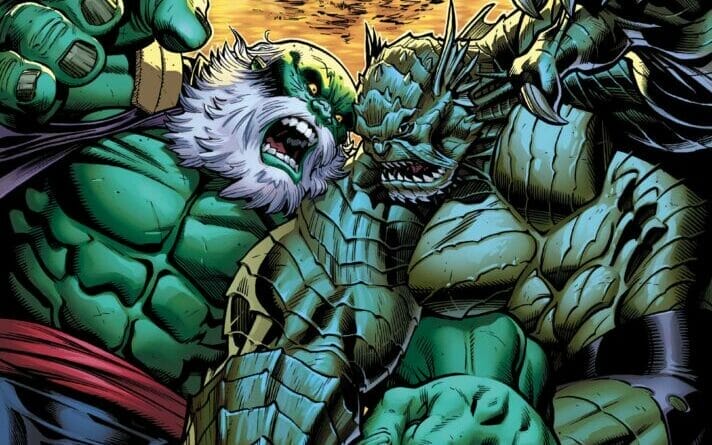***Warning Spoilers Ahead For Maestro: World War M***
Maestro: World War M Issue #1 sees the final chapter in Peter David’s Maestro trilogy begin. Peter David returns as writer for the third and final chapter of Maestro’s origins. With pencilers Germán Peralta, returning for Maestro: War and Pax, and Pasqual Ferry, colorists Jesus Aburtov and Matt Hollingsworth, and VC’s Ariana Maher as letterer, the first issue of this new limited series sees Maestro move to secure his total control over the Future Imperfect world.
In his goal to consolidate power, Maestro has destroyed A.I.M and the pantheon, with Victor Von Doom having all but died before the might that is Maestro. However, it seems that the enemies of the Banner system refuse to remain buried even in this twisted timeline. Whilst he saw that missiles brought A.I.M’s underground base to ruin, Maestro failed to discover that A.I.M was keeping Emil Blansky, the Abomination, in stasis all these years. Not only has the Abomination survived, but he’s also awoken.
Maestro, so close to securing his ultimate reign of his kingdom, now has to contend with the unlikely alliance of the newly revived Abomination, Namor the Sub-Mariner, and the vengeful Victor Von Doom. However, it seems that there is a fourth player the titular teal titan must clash with. To the surprise of Maestro, The Human Torch, Johnny Storm, comes blazing back onto the field! Or at least someone who appears to be Johnny. With this new Human Torch being able to hurt him and the Abomination’s alliance getting ready to move in on him, it seems Maestro’s green grip may not tighten over the world as quickly as he hoped.
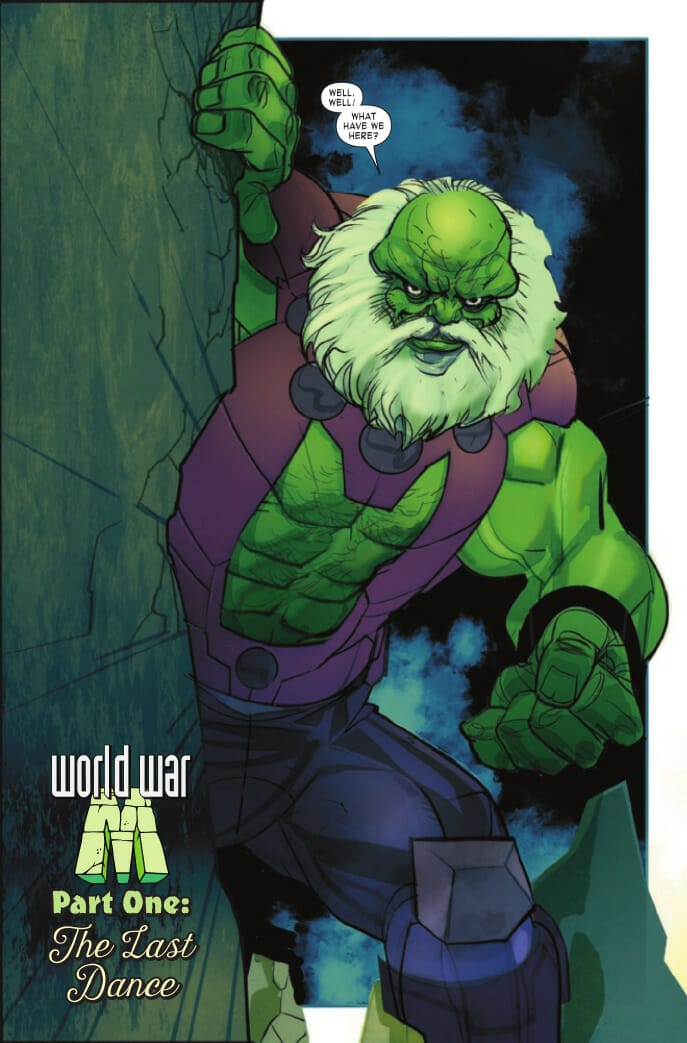

One of the most interesting choices the creative team made for this issue is the decision to have a separate penciler and colorist duo produce the opening scene. Whilst this may seem pointless at first, the difference in styles enhances the issue’s ability to tell the story in a cohesive order. As the opening scene takes place in the computer simulation Abomination was placed in whilst A.I.M had him in stasis, it allows for a distinct separation between any alternate points in time and the story taking place in the present, meaning there is little to no chance the readers shall get confused by the change from Ferry and Hollingsworth’s art to Peralta and Aburtov’s.
Whilst the use of two art teams to handle different points in the story creates a clear pattern for showcasing the order in which events take place, the different art styles may affect readers’ enjoyment of the issue based on their preference. Both art styles are well-drawn, they offer two different feels for the issue: Ferry’s being more vibrant and cartoon-like, à la Peter David’s original run on Hulk from the ’80s and ’90s, whereas Peralta’s art styles offer a more gritty and realistic depiction of the apocalyptic landscape.
Although each style greatly enhances the issue, with Ferry’s art offering great character acting and emotion and Peralta’s emphasis on detail allowing for breath-taking action sequences, the stark difference may break up the flow of the issue for some readers. Especially if readers are continuing on from the previous installment in the trilogy: Maestro: War and Pax, in which Peralta was the main artist, and has grown accustomed to his drawings.
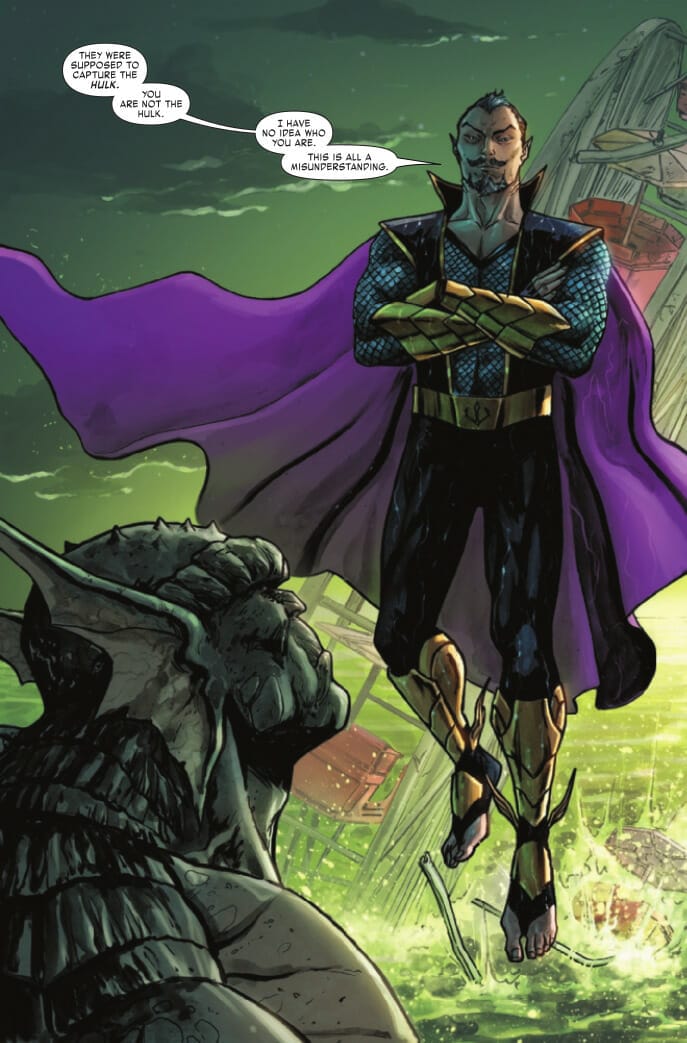
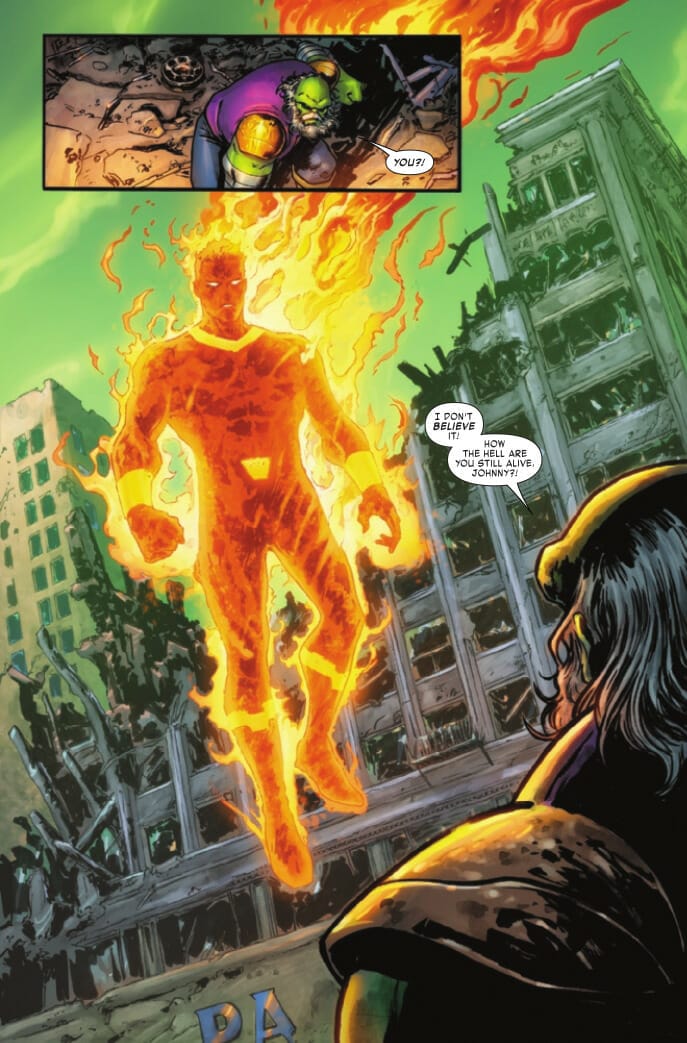
A strong point of the issue is the clashing ideologies of Namor the Submariner and Maestro, whilst the two never interact in this issue, the need to reintroduce Abomination to this new dystopian landscape allows David to spell out why Namor wants to eliminate Maestro. True to his character, Namor does not appear as a virtuous hero, but rather a stoic and power-hungry ruler. In the Future Imperfect timeline, the Atlanteans appear to have survived the nuclear fallout that eliminated the majority of humanity.
With the humans wiped out, Atlanteans are in a position to secure their supremacy over the Earth. The issue Namor faces is not Maestro and his power alone, but the fact that Maestro seeks the revival of humanity with him as their supreme leader. Once again making humans dominate over the Atlanteans.
Peter David’s use of Namor in this issue creates an interesting moral dilemma for the reader. Namor seeks to stop the evil and tyranny that Maestro will subject the world too, he only does so his own goal of domination over the Earth is not hindered. Namor’s presence in the story introduces readers to a choice of deciding which is the lesser of the two evils.
Another interesting use of the character in this issue is Abomination. Emil Blansky’s characterization of this issue is defined by a profound sense of emptiness within this issue. Within his stasis in A.I.M’s laboratory, he was a high-ranking official of the KGB. Now that he has awoken, he has nothing.
The Abomination has unwillingly accepted a mission from M.O.D.O.K to enact vengeance on Maestro and is forced into being a weapon, stripped of any agency or power he thought he had. For him death is a more preferable existence. The themes of loss and emptiness surrounding Abomination’s character in this series further the threat and sense of evil surrounding Maestro, with his presence in the world bringing a perpetual sense of pain to those below him.
Although Hulk fans will know that Maestro eventually gains total control over the world, as seen in the Future Imperfect storyline, the introduction of the new Human Torch into this universe offers an interesting mystery and expansion to the mythos surrounding the Maestro character. Not only does the Human Torch present the Maestro with a legitimate threat to his rule, but it also expands the Future Imperfect universe’s overall story. It creates the question of who is behind the new Human Torch mantle, whether it is Johnny Storm who has been altered in some way, or that ‘Jim’ is an entirely new character.
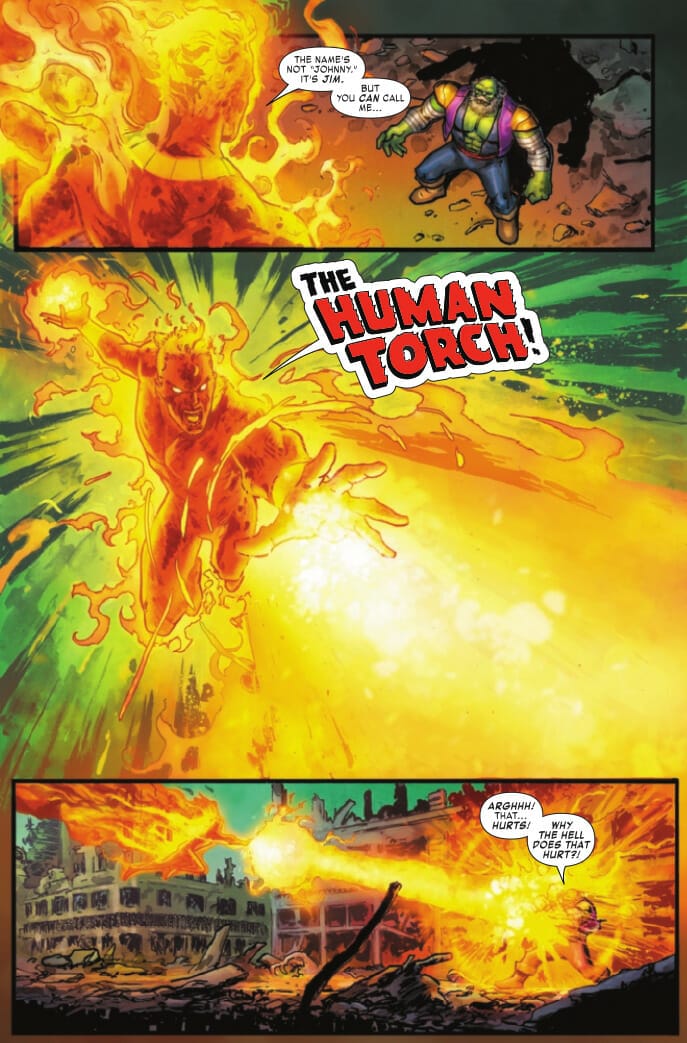

Maestro: World War M acts as an intriguing opening for the final chapter of the Maestro’s origins. Although the presence of two art styles throughout the issue may not please readers with a specific preference for one over another, they are both brilliantly drawn and offer a strong sense of cohesion and create a pattern for how the story shall be told in coming issues. The presence of Namor in this story creates an interesting dilemma surrounding Maestro’s leadership, whether or not it is better to let humanity rebuild under tyranny or not let humanity restore itself to ensure that a tyrannical rule never comes.
Through the characterization of this universe’s Emil Blansky, the damage that Maestro can inflict upon the world is furthered, with his destruction and power hurting those even in death. The introduction of this new Human Torch character expands the mythos of the Future Imperfect universe and adds a greater sense of intrigue to the story of Maestro. Maestro: World War M appears to be shaping up to be a brilliant final chapter to the origins of Maestro Hulk, with it setting up a conflict that will soon even further cement Maestro as one of the most compelling characters to come out of The Incredible Hulk books.
Want to discuss things further? Hit us up on Twitter, Facebook, or Instagram. And for more film, gaming, anime, and TV news, trailers, and updates make sure to keep it locked right here at The Nerdy Basement. While you’re here, please consider supporting us on Patreon! It’s an easy way of supporting us so we can keep providing you with your Nerdy News!

